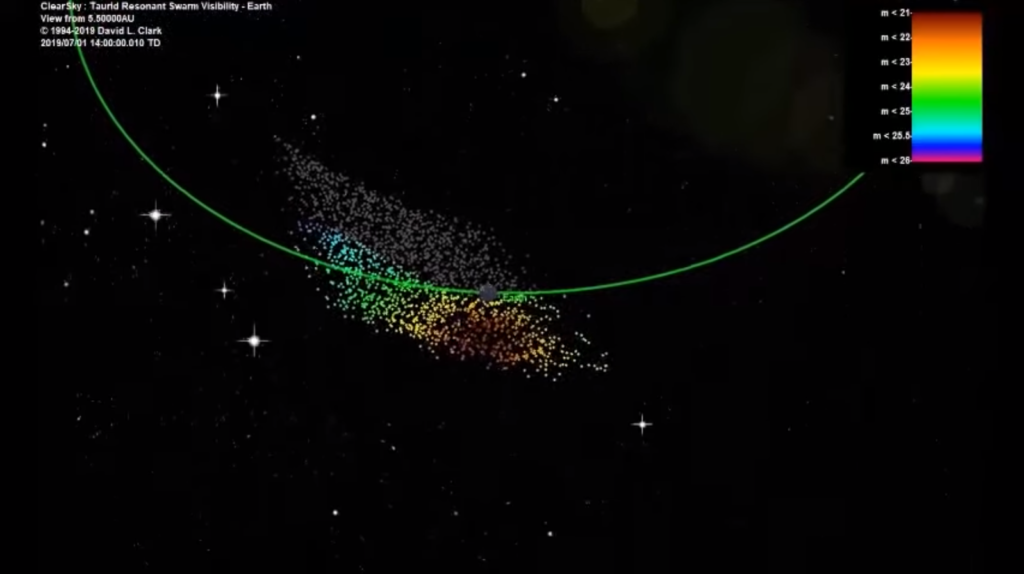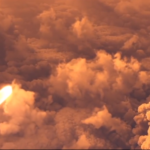
In the previous few months we have seen an increase in fireball activity. Is it the end times? Probably not in the way that some people are thinking it is, but some scientists are worried. Que the Taurid Swarm. These debris are what the comet Encke left behind on it’s most recent close pass in March of 2017, and every three years before that.
The 2019 Taurid Swarm Hypothesis
Something else that many of us have heard of is the Tunguska Event of 1908. Why do I bring this up? The Taurid Meteor Swarm is actually thought to be linked to the Tunguska event on June 30th 1908. Earth crosses into the stream of debris from comet Encke twice per year: Once in October for the primary Taurids meteor shower and then again in Late June or Early July for the Beta Taurids. Also when astronomers have traced back the Tunguska event’s probable orbit, it also comes from the general direction of the Beta Taurids. If you’re following along, this is two events that occur in late June that also are hypothesised to be linked to Tunguska. Events of this type are only supposed to occur every one-thousand years, but if the hypothesis of a swarm of debris turns out to be accurate this could mean that this “every thousand-year event” could happen a bit more frequently.
It’s commonly known in the asteroid and physics community that debris usually scatter out across space and become less concentrated as time goes on. According to Astronomer Phil Plait, the hypothesis of the Taurid Swarm and why they are still grouped together has to do with their orbit around the Sun and also gravitational influences from around Jupiter.
While the links to the Tunguska event are all hypothesised right now, there has been data in the past that indicate that the existence of this swarm of space debris exists. In 2015 there was an increase in fireball activity, and this is when researchers started to take note of what was going on. Yet again, here we are in 2019 and seeing an increased rate of fireball activity and also increased awareness of what this event could mean for Earth.
Video Simulation of core swarm Credits: dclark56 Arxiv.org
With all of the above being said, it needs to be stated that a while a Tunguska event from this pass of the Taurid Swarm is highly unlikely, it is possible. The reason it is concerning to some is the fact that we cross through this stream twice per year as I noted earlier in both October and Late June/Early July. There are teams of scientists and citizen scientists all over the world dedicating time and money to finding these potential impactors and alerting us to their existence. While they do an amazing job, it’s thought that we have only mapped around 90% of Near Earth Objects (NEO’s). Only about five thousand of these (error margin +/- 1000) are classified as Potentially Hazardous. The other 10% is likely to be another few thousand yet to be discovered asteroids. We are still discovering new ones on the daily as well. The most recent and closest one was the asteroid 2019 JH7 that passed only 66,000km away from Earth and less than 12 hours after discovery. It was fairly small (about 5m) when it comes to talking about asteroid sizes.
Following Video shows it’s close approach.

Seeing as we already noticed an increase in Fireball activity from early April though now, how do you think late June, early July, and into Early August will look? The dates that are predicted to be the most active are July 5th to the 11th for more southern latitudes, and then July 21st and August 10th for the rest of us around the world.
Special thanks
I also want to say a huge thank you to the Bad Astronomer (Phil Plait) for publishing an article about this and bringing this hypothesis to light. You can subscribe to his newsletter that covers anything from his life, short stories, and science via his twitter page, and also keep up with his blog on the scifi website.
https://twitter.com/BadAstronomer
https://www.syfy.com/tags/bad-astronomy
Amateur Astronomers and Citizen Scientists Group
If you want to stay up to date on science like this and learn how you can contribute to citizen science and learn more about astronomy as a whole, feel free to head over to my Facebook and Twitter pages for at least daily updates of current astronomy and citizen science news.
https://www.facebook.com/groups/1260573284097561/
https://twitter.com/ScienceDude92
Video Credits: http://www.astro.uwo.ca/~dclark56/tauridswarm/arxiv/
COMMENTS
There aren't any comments yet.


LEAVE A REPLY
You must be logged in to post a comment.